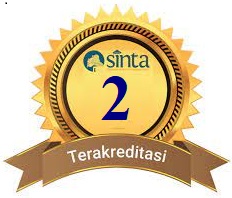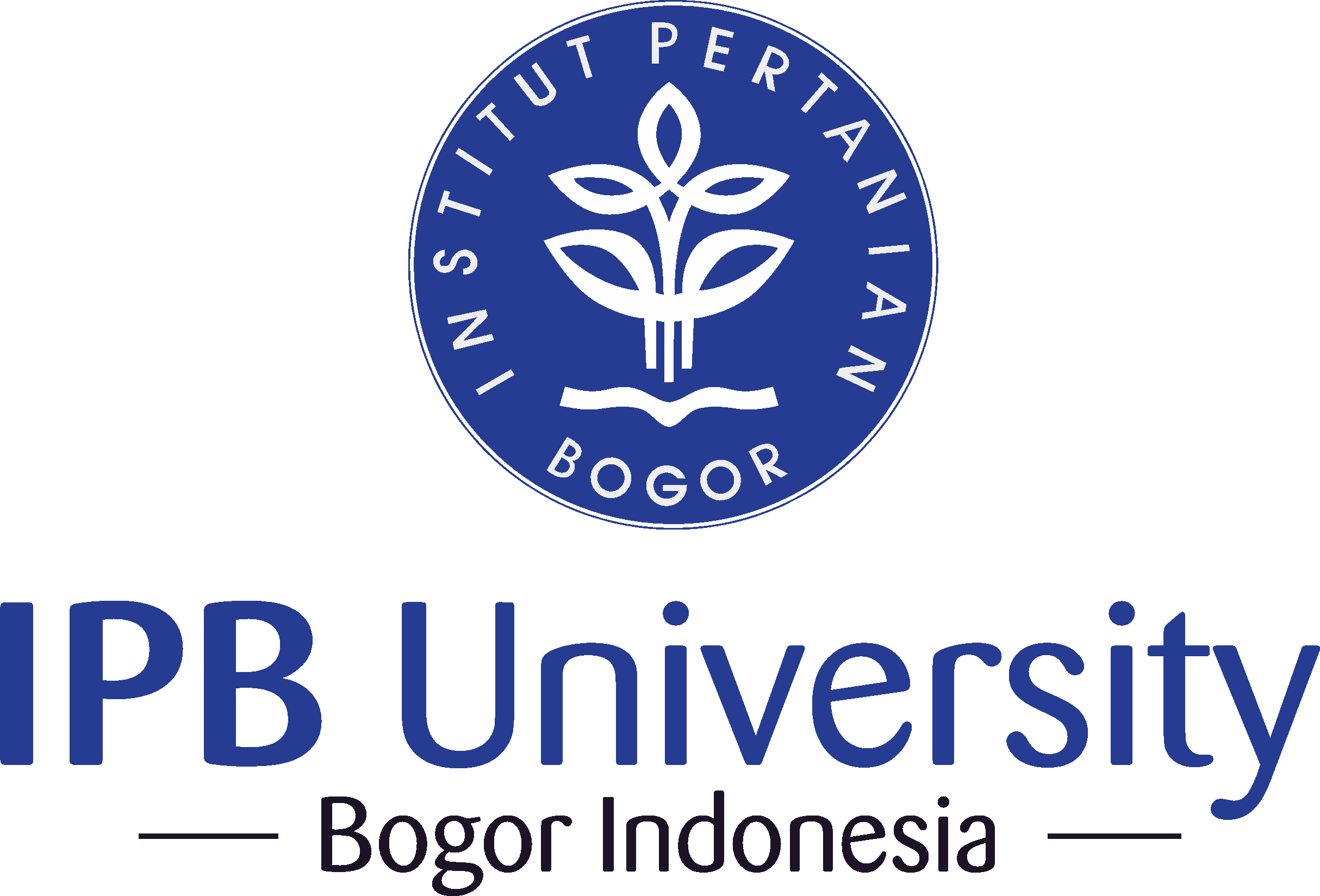Keanekaragaman dan Peran Ekologis Serangga Pengunjung Badan Buah Ganoderma sp.
Abstract
In an ecological perspective, interactions between the fruiting body of pathogenic fungi and other organisms, such as insects, are possible. This research aims to understand and identify the diversity of insect visitors to Ganoderma sp. fruiting bodies along with their ecological roles. The study was conducted at the Faculty of Forestry (FKT) Universitas Gadjah Mada (UGM) Arboretum from August to October 2022. Samples used were Ganoderma sp. fruiting bodies categorized into three stages: young, intermediate, and mature, observed at three different times: morning, afternoon, and evening. Insect visitor diversity was assessed using diversity indices (H’), evenness (E’), and similarity (S’). One-way ANOVA was employed to determine the influence of fruiting body categories and observation times on insect abundance on the fruiting bodies. The research findings revealed that the community of insect visitors to Ganoderma sp. fruiting bodies comprised 5 orders, 14 families, and 24 morphospecies. Dominant insect families were Schizopteridae and Meinertellidae, with respective dominant roles as predators, decomposers, and mycophages. Fruiting body categories influenced Scolytidae, Coccinelloidea, and Schizopteridae families but not Formicidae. Observation times indicated significant differences in abundance for Scolytidae and Schizopteridae. Insects potentially serving as vectors carrying Ganoderma sp. fungal spores included Scolytidae, Coccinelloidea, Staphylinidae, Drosophilidae, Formicidae, and Schizopteridae.
Downloads
References
Allifah, ANAF, Bahalwan F, Natsir NA. 2020. Keanekaragaman dan Kelimpahan Serangga Polinator Pada Perkebunan Mentimun (Cucumis sativus L) Desa Waiheru Ambon. Jurnal Biology Science & Education. 9(1): 26-34.
Ashfaque M, Ullah F, Rafi MA, Naz F. 2015. Taxonomic study of subfamily Scymninae (Coleoptera: Coccinellidae) with one new record from Gilgit-Baltistan, Pakistan. Turkish Journal of Zoology. 39: 1034-1040.
Aveludoni MM. 2021. Keanekaragaman Jenis Serangga di Berbagai Lahan Pertanian Kelurahan Maubeli Kabupaten Timor Tengah Utara. Wahana-Bio: Jurnal Biologi dan Pembelajarannya. 13(1): 11-18.
Betz O. 2004. The Eating Instruments of Spore-Feeders. German Research. 26(2-3): 27-29.
Borror DJ, Triplehorn CA, Johnson NF. 1992. Pengenalan Pelajaran Serangga. Gadjah Mada University Press, Yogyakarta (ID).
Campbell NA., Reece JB, Mitchell LG. 2003. Biologi. Penerbit Erlangga, Jakarta (ID).
Carrillo, Duncan DRE, Ploetz JN, Campbell AF, Ploetz RC, Peña JE. 2014. Lateral transfer of a phytopathogenic symbiont among native and exotic ambrosia beetles. Plant Pathology. 63(1): 54-62.
Csata E, Dussutour A. 2019. Nutrient regulation in ants (Hymenoptera: Formicidae): a review. Myrmecology News. 29: 111-124.
Day NJ, Dunfield KE, Johnstone JF, Mack MC, Turetsku MR, Walker XJ, White AL, Baltzer JL. 2019. Wildfire severity reduces richness and alters composition of soil fungal communities in boreal forests of western Canada. Global Change Biology. 25: 2310-2324.
Dewi NR, Rochyansyah S. 2021. Implementasi Model Green Campus dalam Program Pemberdayaan Masyarakat Inspiring Bulaksumur Urban Community (IBUC). Sosio e-Kons. 13(3): 208-221.
Elliott TF. 2020. Animal-Fungal Interactions: Observations of Coleopteran use of Ganoderma and other fungi in the southern Appalachian Mountains. McIlvainea. 29: 1-7.
Epps MJ, Penick CA. 2018. Facultative mushroom feeding by common woodland ants (Formicidae, Aphaenogaster spp.). Food Webs. 14:9-13.
Fachrul MF. 2007. Metode Sampling Bioekologi. Penerbit Bumi Aksara, Jakarta (ID).
Fitriani. 2018. Identifikasi Predator Tanaman Padi (Oryza sativa) Pada Lahan Yang Diaplikasikan Dengan Pestisida Sintetik. Agrovital: Jurnal Ilmu Pertanian Universitas Al Asyariah. 3(2): 65-69.
Handani MMN, Febrita E. 2015. Inventarisasi Serangga Polinator di Lahan Pertanian Kacang Panjang (Vygna cylindrica) Kota Pekanbaru dan Pengembangannya Untuk Sumber Belajar Pada Konsep Pola Interaksi Makhluk Hidup di SMP. JOM FKIP UNRI. 6-11.
Hastuti D. 2011. Kemelimpahan Coccinellidae Pada Pertanaman Jagung Yang Diberi Kompos Gulma Siam (Chromolaena odorata). Jurnal Agroekoteknologi. 3(1): 1-4.
Henry, T.J., 2019. Family Schizopteridae Reuter, 1891: The Schizopterids. In Catalog of the Heteroptera or True Bugs, of Canada and the Continental United States (pp. 682-683). CRC Press.
Herliyana, Nina E, Taniwiryono D, Minarsih H. 2012. Penyakit Akar Ganoderma sp. pada Sengon di Jawa Barat dan Jawa Timur. JMHT. 18(2): 100-109.
Hidayati N, Nurrohmah SH. 2015. Karakteristik Morfologi Ganoderma steyaertanum Yang Menyerang Kebun Benih Acacia mangium dan Acacia auriculiformis di Wonogiri, Jawa Tengah. Jurnal Pemuliaan Tanaman Hutan. 9(2): 117-130.
Indriyanto. 2006. Ekologi Hutan. Bumi Aksara, Jakarta (ID).
Kedawung W, Jekti. 2013. Keanekaragaman Serangga Tanaman Tomat (Lycopersicon esculentum Mill.) di Area Pertanian Desa Sapikerepsukapura Probolinggo dan Pemanfaatannya Sebagai Buku Panduan Lapang Serangga. Pancaran. 2(4): 142-155.
Krebs CJ. 1989. Ecology The Experiment Analysis of Distribution and Abundance. Harper and Row Publisher, New York (USA).
Lipkow E, Betz O. 2005. Staphylinidae and fungi. Faunistisch-Ökologische Arbeitsgemeinschaf. 8: 383-411.
Ma Y, He K, Yu P, Yu D, Cheng X, Zhang J. 2015. The Complete Mitochondrial Genomes of Three Bristletails (Insecta: Archaeognatha): The Paraphyly of Machilidae and Insights into Archaeognathan Phylogeny. PLOS ONE. 10(1): 1-19.
Meilin A, Nasamsir. 2016. Serangga dan Peranannya Dalam Bidang Pertanian dan Kehidupan. Jurnal Media Pertanian. 1(1): 18-28.
Muñoz SI. 2007. Ecology research progress. Nova Science Publishers, Inc., New York (USA).
Pulukadang S, Mamahit JME, Dien MF, Manengkey GSJ. 2014. Jenis dan Populasi Serangga di Areal Tanaman Nanas (Ananas comosus (L.) Merr.) Kecamatan Passi Barat Kabupaten Bolaang Mongondow. Cocos. 4(6): 1-17.
Purwanto PB, Zaman MN, Yusuf M, Romli M, Syafi’i I, Hardhaka T, Fuadi BF, Akhmad SR, Rouf MSA, Adi A, Laily Z, dan Haris YP. 2017. Inventarisasi Jamur Makroskopis di Cagar Alam Nusakambangan Timur Kabupaten Cilacap Jawa Tengah. Proceeding Biology Education Conference. 14(1): 79-82.
Putra PIGA, Watiniasih NL, Suartini NM. Inventarisasi Serangga Pada Perkebunan Kakao (Theobroma cacao) Laboratorium Unit Perlindungan Tanaman Desa Bedulu, Kecamatan Blahbatuh, Kabupaten Gianyar, Bali. Jurnal Biologi. 14(1): 19-24.
Ricco F, Kustiati, Riyandi. 2019. Keanekaragaman Serangga di Kawasan IUPHHK-HTI PT. Muara Sungai Landak Kabupaten Mempawah Kalimantan Barat. Protobiont. 8(3): 122-128.
Rosnadi AF. 2019. Identifikasi Semut (Hymenoptera: Formicidae:Myrmicinae Pada Tiga Tipe Perumahan Yang Ada di Bandar Lampung. [Skripsi]. Lampung (ID): Universitas Islam Negeri Raden Intan, Lampung.
Rudinsky JA. 1962. Ecology of Scolytidae. Annual Review of Entomology. 7: 327-348.
Sanchez-Garcia A, Penalver E, Delclos X, Engel MS. 2019. Jumping Bristletails (Insecta, Archaeognatha) From the Lower Cretaceous Amber of Lebanon. Papers In Palaeontology. 1-19.
Scudder GGE. 2010. Scientific Note: The Schizopteridae (Hemiptera), a family new to Canada. Journal of the Entomological Society of British Columbia. 107: 85-86.
Setiawan Y. 2017. Keanekaragaman Kumbang Ambrosia (Coleoptera: Scolytidae) Pada Tanaman Jati (Tectona grandis Linn. f.) Sistem Monokultur dan Polikultur di Kabupaten Malang, Jawa Timur. [Skripsi]. Malang (ID): Universitas Brawijaya.
Sikdar S, Hath TK, Chatterjee M, Chakraborty D, Patra B. 2019. Diurnal foraging activity of flower visiting insects on some seed spices under terai agroclimatic zone of West Bengal. Journal of Entomology and Zoology Studies. 7(4): 299-303.
Suwondo, Febrita E, Hendrizal A. 2015. Komposisi dan Keanekaragaman Serangga Tanah di Arboretum Universitas Riau Sebagai Sumber Belajar Melalui Model Inkuiri. Jurnal Biogenesis. 11(2): 93-98.
Taskirawati I. 2015. Production and Dispersal of Basidiospores of Ganoderma applanatum in Japan. [Disertasi]. Kanazawa (JP): Graduate School of Natural Science & Technology.
Tuno N. 1999. Insect feeding on spores of a bracket fungus, Elfvingia applanata (Pers.) Karst. (Ganodermataceae, Aphyllophorales). Ecological Research. 14: 97–103.
Utomo DN. 2021. Sebaran Jamur Ganoderma spp. dan Kerusakan yang Ditimbulkannya pada Pohon di Kawasan Kampus Universitas Gadjah Mada, Yogyakarta. [Skripsi]. Yogyakarta (ID): Universitas Gadjah Mada, Yogyakarta.
Valer FB, Bernardi E, Mendes MF, Blauth ML, Gottschalk MS. 2016. Diversity and associations between Drosophilidae (Diptera) species and Basidiomycetes in a Neotropical forest. Anais da Academia Brasileira de Ciências. 88(1): 705-718.
White RE, Borror DJ. 1998. A Field Guide to Insects: America North of Mexico. Houghton Mifflin Harcourt Publishing Company, Boston (USA).
Widyastuti SM, Sumardi, Sulthoni A, Harjono. 1998. Pengendalian Hayati Penyakit Akar Merah Pada Akasia Dengan Trichoderma. Jurnal Perlindungan Tanaman Indonesia. 4(2): 65-72.
Yamashita S, Ando K, Hoshina H, Ito N, Katayama Y, Kawanabe M, Maruyama M, Itioka T. 2015. Food web structure of the fungivorous insect community on bracket fungi in a Bornean tropical rain forest. Ecological Entomology. 40: 390–400.
Zakaria L, Ali NS, Salleh B, Zakaria M. 2009. Molecular Analysis of Ganoderma species from Different Hosts in Peninsula Malaysia. Journal of Biological Sciences. 9(1): 12-20.
Zhang W, Li H, Shih C, Zhang A, Ren D. 2017. Phylogenetic analyses with four new Cretaceous bristletails reveal inter-relationships of Archaeognatha and Gondwana origin of Meinertellidae. Cladistics. 34: 384–406.

This work is licensed under a Creative Commons Attribution-NonCommercial 4.0 International License.
This journal is published under the terms of the Creative Commons Attribution-NonCommercial 4.0 International License. Authors who publish with this journal agree to the following terms: Authors retain copyright and grant the journal right of first publication with the work simultaneously licensed under a Creative Commons Attribution-NonCommercial 4.0 International License. Attribution — You must give appropriate credit, provide a link to the license, and indicate if changes were made. You may do so in any reasonable manner, but not in any way that suggests the licensor endorses you or your use. NonCommercial — You may not use the material for commercial purposes.


















